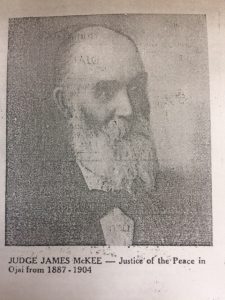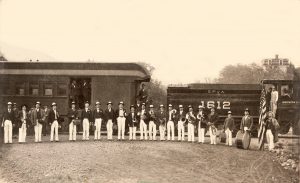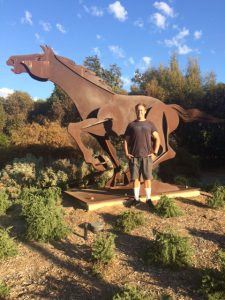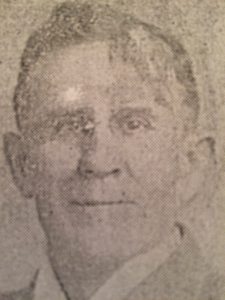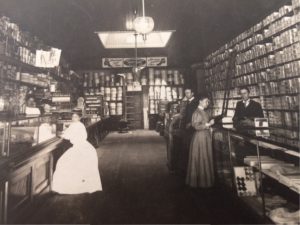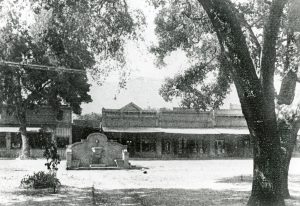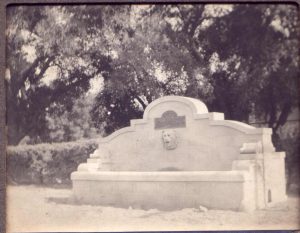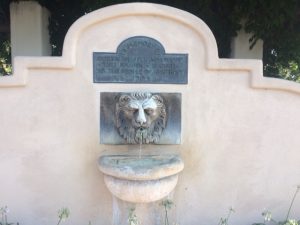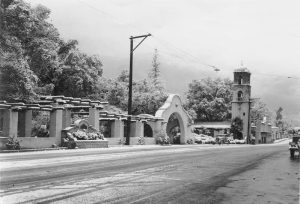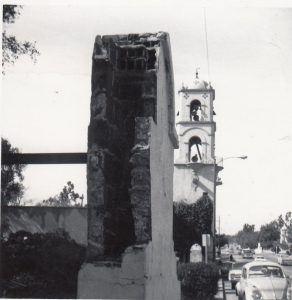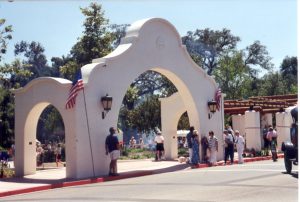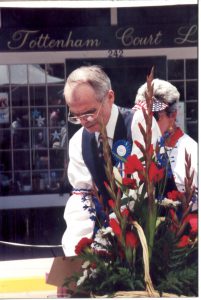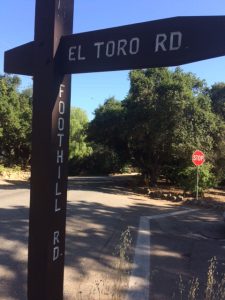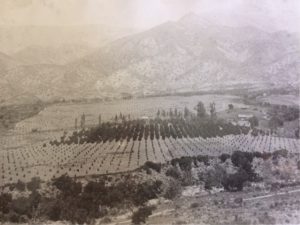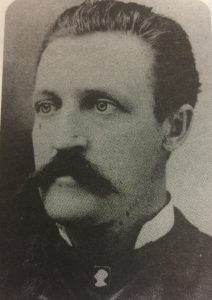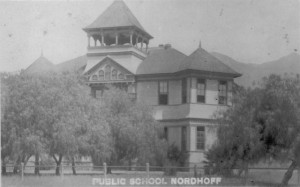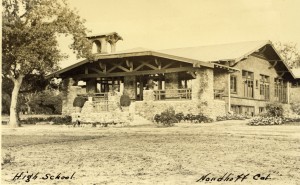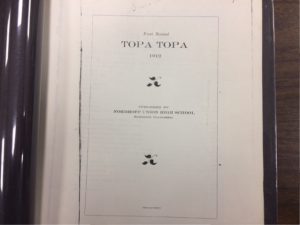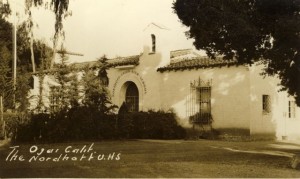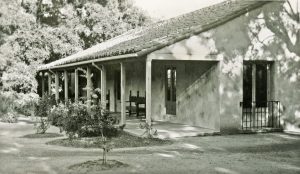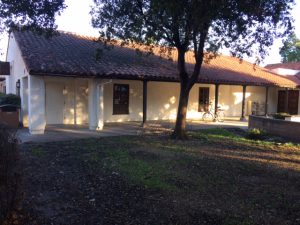The following article first appeared on Page A-2 in the November 11, 1992 edition of the Ojai Valley News. It’s reprinted here with their permission.
by
Susan Petty
David Mason: Linking Past & Future
———————–
“In the middle of the Ojai Valley lies a little hamlet, which the people have been kind enough to name after the author of this book.”
—- Charles Nordhoff
———————–
“The Ojai Valley (pronounced Ohy) is reached by a drive of 38 miles by way of the Carpenteria and the Casitas Pass…The valley is famous even in California for the abundance and loveliness of its woods of evergreen oaks…the oaks dot the surface of the whole lower valley, and are scattered over it in single specimens and clumps…”
The description crafted by Charles Nordhoff in his 1882 edition of “California for Health, Pleasure, and Residence” is a vision shared in many ways by one special Ojai man.
Separated by a century, Charles Nordhoff and David Mason share a common bond – enthusiasm for the Ojai Valley, and the ability to communicate that to others. Nordhoff wrote eloquently one hundred years ago about the grandeur of the valley and of California. Mason, a lifelong resident of Ojai, currently gives witty, informative slide shows about the history of the valley.
“Charles Nordhoff died on July 14 in 1901. I was born 38 years later in Ojai, on July 14. That coincidence has become significant to me over time, as I have become more drawn to the early days of Ojai,” said Mason, 53. “I feel very close to Nordhoff’s era in many ways.”
Mason’s interest in the past was sparked in 1964, when a friend’s mother died. The friend asked to use Mason’s dumpster to throw out some old things. Those “old things” included hundreds of postcards and photographs of early Ojai, and other memorabilia, Mason rescued all he could from the trash bin, and he was hooked.
“I framed a lot of the postcards, and had copies of the photos made for the Ojai Valley Museum and the Ventura County Museum. Over the years I’ve collected much more, and I’ve saved things, like photos of Lake Casitas being built. I’m an incredible packrat,” he said with a chuckle.
Mason now serves as vice chairman, and is past chairman, of Ventura County’s Cultural Heritage Board. He was the first chairman of the City of Ojai’s Cultural Heritage Board, and was also Ojai’s Citizen of the Year in 1986. Mason works as a realtor, having retired after a 25 year career as a florist. He owned the award-winning Village Florist in the Arcade, and closed it three years ago.
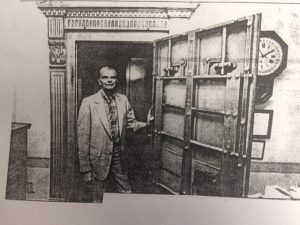
Mason’s slide show, which he presents to groups around the county, begins with Charles Nordhoff’s birth in 1832 in what was then Prussia. He tracks Nordhoff’s life – his move to America at the age of 3 and, later, traveling around the world with the U.S. Navy. Eventually Nordhoff became editor of the New York Post, and wrote his famous book “California for Health, Pleasure, and Residence” in 1872. That 206 page volume brought so many settlers to the state that Nordhoff was the name originally chosen for Ojai.
“Between 1870 and 1900, the population of California doubled, growing from 560,000 to well over a million. In that same 30 year period, over three million copies of Nordhoff’s book were sold,” Mason commented.
According to Mason, Mrs. Catherine Blumberg suggested the town be named Nordhoff in the early 1870’s. Topa Topa was also being considered. Catherine and her husband, Abram Wheeler Blumberg, came out West because of Nordhoff’s book and built the Ojai Inn in what is now Libbey Park. Nordhoff remained the village’s name for over 40 years.
“The name was formally changed to Ojai in 1917, at the beginning of World War I. There was a lot of anti-German sentiment, which fueled the change,” Mason remarked.
With slides and commentary, Mason captures the growth of the little town from 1872, when about 50 people lived in the village, up into the 1920’s. By then, cut-glass heir Edward Drummond Libbey of Ohio had come to Ojai and put his very personal stamp on the town. Libbey bought the 360 acre Arbolada, to save the area from being cut down for wood, and began to sell lots for homes. He also built the Ojai Valley Inn, the Post Office tower, the arched entryway to Libbey Park (now gone), and transformed the front of the downtown stores into a Spanish Mission style Arcade. Libbey also made a generous donation to the St. Thomas Aquinas Chapel, and had a hand in its construction.
“Mr. Libbey had the desire to make things beautiful and the money to do it. He was influenced by castles in Spain and the rural Spanish towns, with their muted colors and soft, flowing lines.
“Mr. Libbey was also a smart developer. Here he had bought the Arbolada, but then had trouble selling the lots. People would come out to Ojai to buy a lot and they’d see how rustic things were downtown, with dirt streets and wooden slats along the front of the stores. It lacked charm. It looked like a Western frontier town and there wasn’t much to do,” Mason said. “So Libbey created a golf course and a nice downtown.”
Mason feels that if Libbey were to visit Ojai today, he would be quite pleased with the town.
“He would definitely approve of the look of Ojai. He would particularly like the Redevelopment Agency’s project of 1980, which remodeled the back of the Arcade to match the front. That completed Mr. Libbey’s vision for the town,” he said. “But he would miss those arches that were in front of the park!”
The arches were torn down in the late 1960’s. Originally they stood along the Ojai Avenue entrance to the park, and were designed to provide a balance to the heavy look of the Arcade. The park arches had an overhead trellis that was covered in wisteria. And directly in front of the arches, a lion’s head fountain served as a horse trough. The fountain was in place several years before Libbey commissioned the arches.
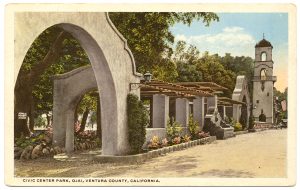
Mason believes that there might be a resurgence of interest in the old arches, and a move to replace them eventually. Mason would support such a move.
“I have a lot of respect for Mr. Libbey’s aesthetic vision for Ojai,” he said. “It’s our heritage. It’s what makes us unique.”
[Mason later headed up a committee to rebuild the Pergola. The recreated Pergola was dedicated on July 4, 1999.]

